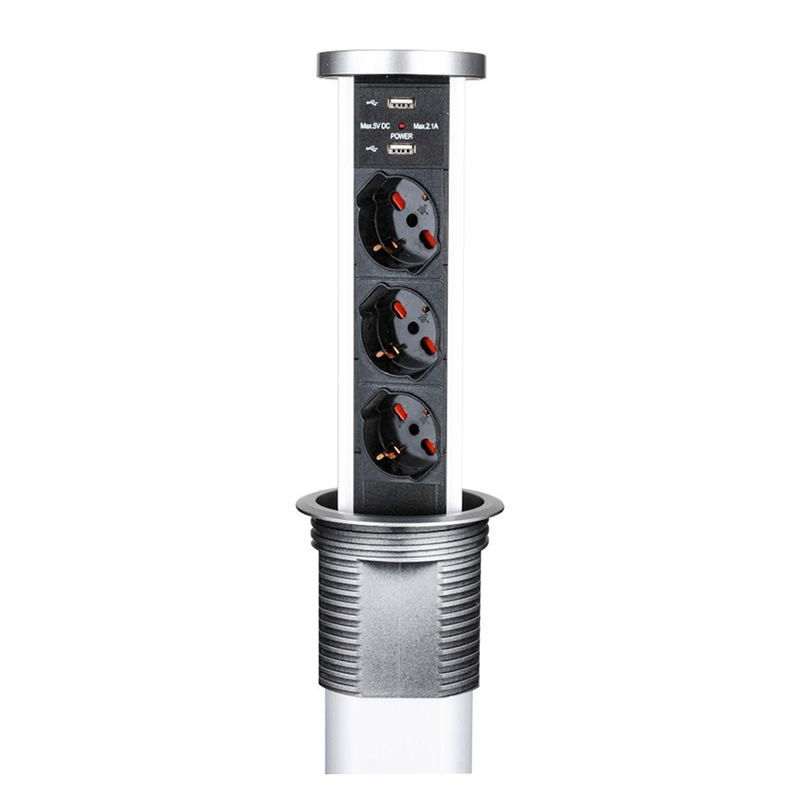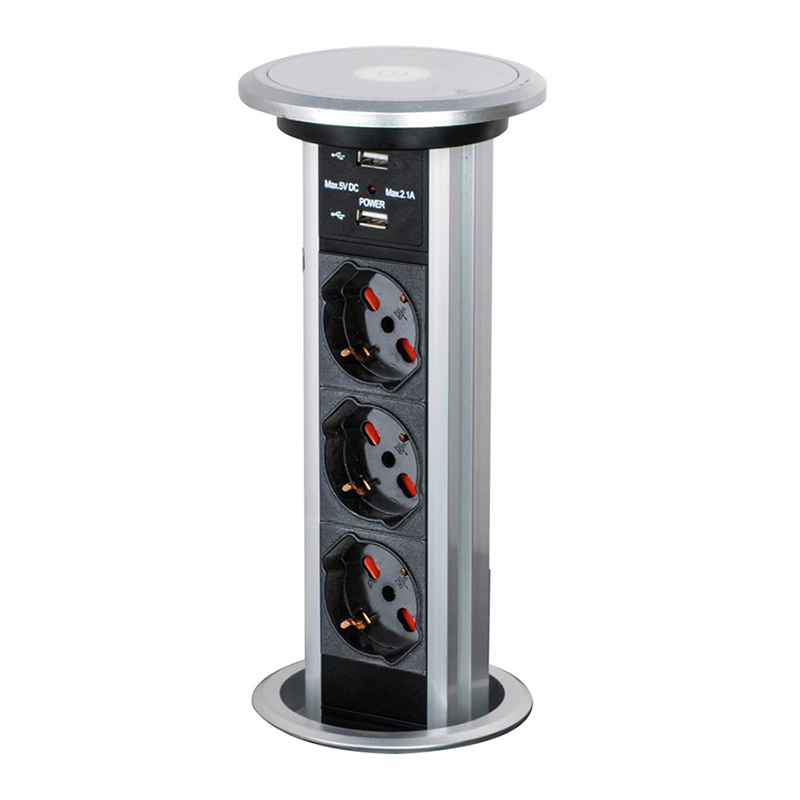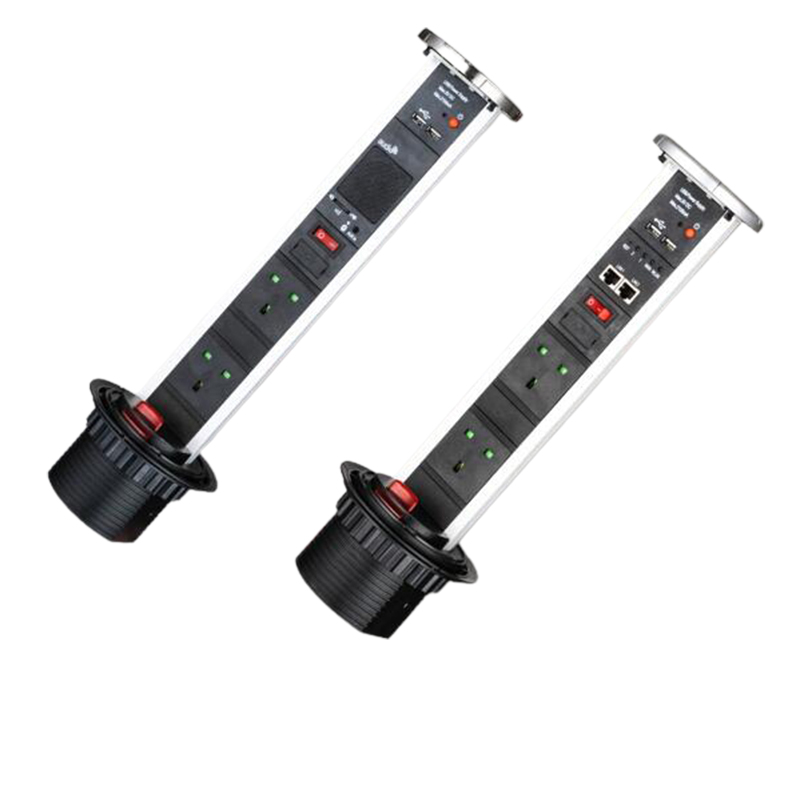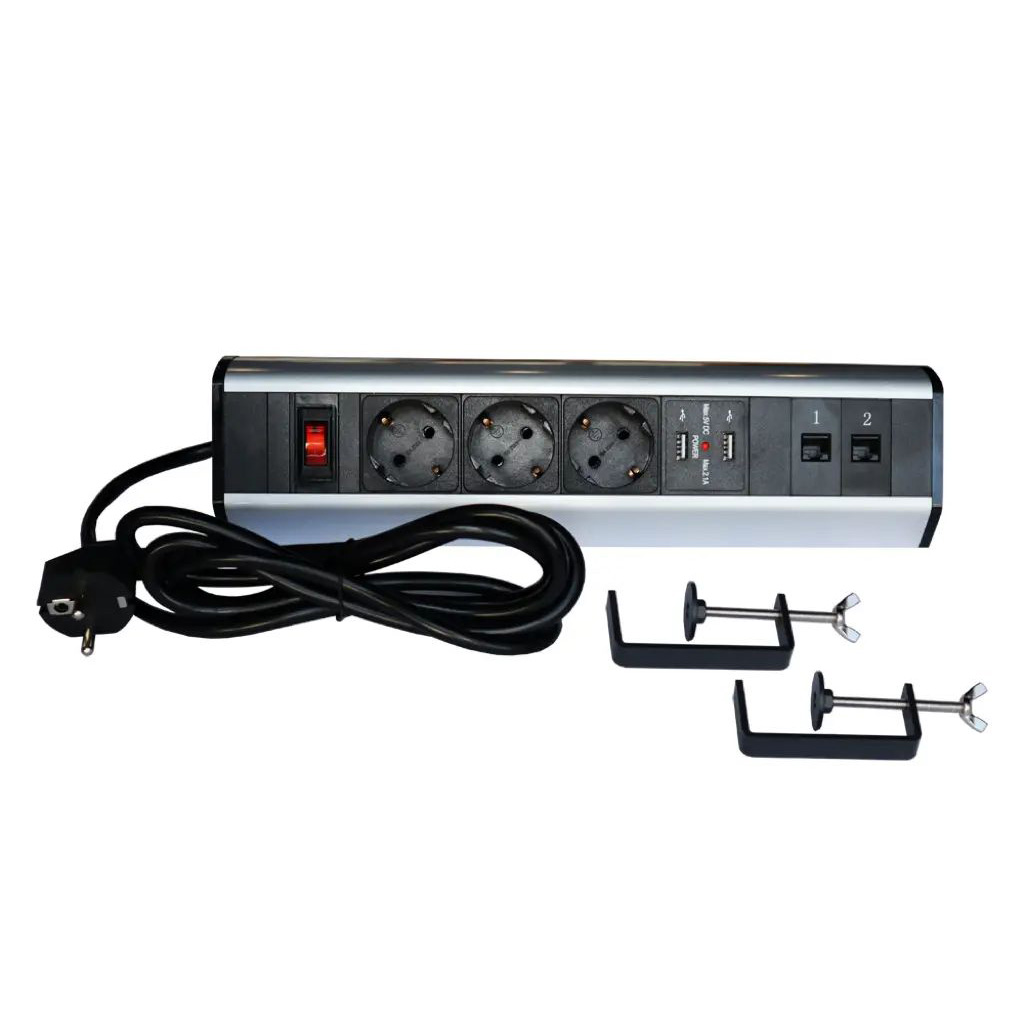Desktop Socket
A desktop socket is a versatile and convenient electrical outlet solution designed to be integrated into work surfaces, desks, or tabletops. Its purpose is to provide users with easy access to power, data, and other connectivity options, contributing to a more organized and functional workspace. Desktop sockets are widely installed in various settings, including offices, conference rooms, meeting spaces, and home offices. There are also kitchen pop up power sockets.
There are two major types of desktop electrical sockets: horizontally placed on the desktop and vertically pop-up retractable socket (hidden when not in use)
The function often includes Power outlets which allow users to plug in devices directly without the need for extension cords; Data and USB Ports (desk sockets with USB) which facilitate the connection of devices like printers, external hard drives, or USB-powered gadgets; Audio and Video Ports which support multimedia connections, particularly useful in conference rooms or multimedia workstations; Networking ports which provide a direct and reliable connection to the local network, ensuring seamless data transfer.
The primary function of a desktop socket is to streamline the connectivity of electronic devices within a workspace. By embedding the socket into the desk or table, it eliminates the need for visible cables, reducing clutter and creating a cleaner aesthetic. Users can easily access power and connectivity options without having to reach under the desk or use multiple adapters. Desktop sockets are typically designed for easy installation. They are mounted into a pre-cut opening in the desk or table, ensuring a flush and seamless integration. Some models may also feature retractable or flip-up designs, allowing the socket to remain hidden when not in use.
In conclusion, desktop sockets play a crucial role in modern workspace design by providing a functional and organized solution for powering and connecting electronic devices. Their versatility, combined with various port options, makes them an essential component in creating efficient and user-friendly work environments.





